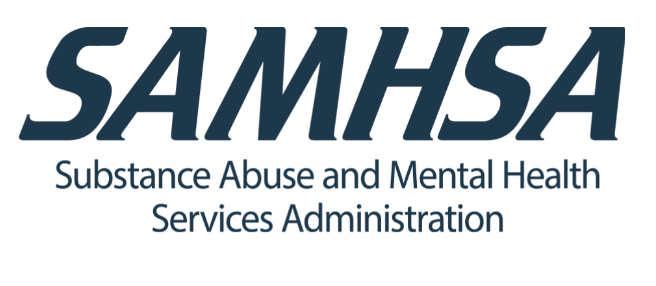Tramadol Withdrawal, Detox, and Treatment

Tramadol is an opioid drug used to relieve pain from moderate to severe levels among individuals. It suppresses sensations of pain by acting on opioid receptors, monoamine reabsorption systems, thereby causing calm and relaxation on an individual. Regular use of tramadol can result in interference of the brain’s chemical messengers, thus altering brain pathways and structures. It can also result in drug tolerance, whereby the increased quantity of the drug is needed so that it can be effective.
Approximately 45 million prescriptions of tramadol are administered in the United States annually. Dependency on tramadol causes distressing withdrawal symptoms on individuals upon quitting. Persons who use tramadol as per the prescription can also experience dependency and withdrawal symptoms.
What Is Withdrawal?
Regular use of tramadol results in chemical addiction by the body. This is because individuals become tolerant of the drug to the point that they need larger quantities to achieve effectiveness. The brain adjusts to the drug presence chemically as a result. Withdrawal symptoms, in most cases, last for a week.
Since tramadol activates opioid receptors and inhibits monoamine reabsorption systems, withdrawal, therefore, can occur in two ways either atypical opioid withdrawal or traditional opioid withdrawal syndrome. There are two stages of opioid withdrawal: the early withdrawal stage and the late withdrawal stage.

The early withdrawal stage begins when the drug exits from one’s bloodstream, whereas late withdrawal happens later on. Withdrawal signs and symptoms vary depending on the withdrawal phase. Generally, the onset of withdrawal signs and symptoms kick in half a day after the last dosage. According to the Drug Enforcement Administration,90% of individuals hit by withdrawal experience traditional withdrawal symptoms, while the remaining percentage experience intense symptoms such as anxiousness, paranoia, panic attacks, and confusion.
Early Withdrawal Stage Symptoms
- Anxiousness
- Diarrhea
- Difficulty to sleep (Insomnia)
- Body and muscle pains
- Running nose
- Nausea
- Yawning
- Vomiting
- Increased heartbeat rate
- Jumpiness
- Agitation
Late Withdrawal Stage Symptoms
- Extreme paranoia
- Panic attacks
- Low concentration span
- Irritability and mood changes
- Depersonalization
- Dilation of the pupils
- Appetite loss
- Depression
- Gastrointestinal problems such as cramps and stomach ache
- Craving for the drug
Withdrawal Duration
Tramadol withdrawal symptoms intensity depends on the dependency level of an individual to the drug. People react differently to withdrawal, and a couple of factors affect the duration and the intensity of the symptoms. An individual whose brain is overly dependent on tramadol tends to experience severe symptoms as he/she requires more time to normalize and acquire balance interrupted by the continuous drug use in the long term.
The intake method also affects withdrawal and dependency. For instance, an individual using tramadol as prescribed by the physician is less likely to be drug dependent, unlike one who snorts, smokes, or injects the drug. Persons taking other drugs incorporated with tramadol are also at a higher risk of drug dependence and intense withdrawal symptoms.
Other Risk Factors
Genetics, personal physiology, and biological factors have a great impact on individual risk of drug dependence. Some mental and medical health conditions can also trigger drug dependence. The National Council on Alcoholism and Drug Dependence (NCADD) stated that genes played a big role in drug dependence in 50% of the cases. An individual with a history of drug and substance abuse is more likely to be tramadol dependent than one without.
Physical abuse, abandonment, stress, and trauma can trigger an individual to use drugs as well as the age when one begins using drugs. Since the brain regions of adolescents are not developed fully, the areas that influence making decisions, impulse controls, and memory can be destroyed by continuous drug use in the teenage years, according to a report by the Clinical EEG Neuroscience journal.
Tramadol Detox
Depending on the intensity of the usage, detox symptoms can be mild, average, or intense. The process can be unpleasant for most people, and they may relapse to avoid the uncomfortable detoxification process. Therefore, it’s advisable to detox from tramadol under a medical professional’s close supervision.
In most detox situations, tapering off the dosage is considered to avoid intense withdrawal symptoms. During this process, medical practitioners administer a lower dose of the drug as he/she tracks your progress as weeks go by. Tramadol detox makes individuals experience flu-like signs and symptoms, vomiting, and diarrhea included. This poses a dehydration risk to a person and makes him/her uncomfortable.

After a tramadol detox, one’s body becomes less tolerant to the drug and therefore increases the chances of overdose if he/she relapses to taking the high dosage amounts taken before the detox. Approximately, more than 100 Americans die of opioid overdoses daily.
Research studies indicate that to achieve recovery in the long term, it’s advisable to detox in a credited addiction treatment center, where you can be supervised by the health care providers. Since people react differently to various treatment programs, rehabilitation programs lasting for more than three months yield better results in most cases.
Novo Detox Center
One of the best methods to recover from tramadol addiction is through visiting a drug addiction detox center. At Novo Detox Center, we provide detox programs for a wide variety of drug and alcohol addictions. We focus on treating withdrawal symptoms quickly by making you feel comfortable and, according to you, respect as you begin your journey to sobriety.
For clients who prefer inpatient programs, we offer residential treatment facilities in Los Angeles to facilitate addiction recovery in Los Angeles. At our Los Angeles treatment center, we offer heroin detox treatment, alcohol detox treatment, opioid detox treatment, prescription drugs, detox treatment, and co-occurring disorders treatment.
Heroin addiction has been on the rise in the rise in the United States, and overcoming addiction can be an uphill task for addicts. Our LA addiction treatment center has a team of medical experts and counselors who help clients in each stage of recovery from heroin addiction in Los Angeles.
Alcoholism is one of the most common addiction types ranging from moderate to severe in alcoholics. It occurs when the brain gets used to alcohol usage and thereby adopts intoxication as a normal state. We have the best alcohol rehabilitation in LA and CA, which is the best in LA when it comes to alcohol treatment. Our detox center offers top addiction treatment in LA.
Visit us today at Novo detox Center or contact us to get accessed and get individualized treatment from our team of medical experts.
Conclusion
Symptoms lasting more than a week can be classified as Post-Acute Withdrawal symptoms. However, they can last longer but decrease in intensity as time goes by. If an individual is not responding well to the symptoms, health care providers can prescribe medications to ease them. They include;
- Valium for sleeping difficulty (Insomnia)
- Loperamide for diarrhea
- Ibuprofen for body and muscle pains
- Clonidine for anxiousness and sweating
- Metoclopramide for nausea
- Suboxone to counter withdrawal symptoms like Euphoria
The use of therapeutic methods can also be considered to control irritability and mood changes.





